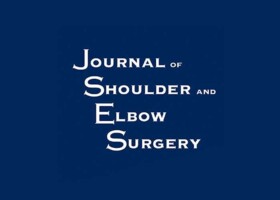
Authors:
Marco-Christopher Rupp, MD, Peter Chang, MD, Marilee P. Horan, MPH, Zaamin B. Hussain, MD, Jonathan A. Godin, MD, Jonas Pogorzelski, MD, Peter J. Millett, MD, MSc
Abstract:
Background
To report clinical and activity-specific outcomes after arthroscopic rotator cuff repair (ARCR) for full-thickness supraspinatus tears in active individuals aged less than or equal to 45 years. The pre hoc hypothesis was that patients in this age group would demonstrate significant improvements in clinical outcomes following ARCR along with a significant improvement of athletic abilities.
Methods
Patients were included in this study if they were (1) active individuals aged between 18 and 45 years at the time of surgery, (2) had a full-thickness rotator cuff tear of the supraspinatus tendon with or without anterior or posterior extension, and (3) underwent ARCR. Preoperative and postoperative patient-reported outcomes scores including the American Shoulder and Elbow Surgeons (ASES) score; Disabilities of Arm, Shoulder and Hand; Single Assessment Numeric Evaluation; and Short Form-12 Physical Component Summary were prospectively collected and postoperative patient satisfaction (scale of 1-10) was recorded at a minimum of 2 years postoperatively. Attainment of the minimal clinically important difference and patient acceptable symptom state for the ASES was calculated. Athletic activity–specific outcomes and return to activity were investigated prospectively via a custom-made comprehensive questionnaire.
Results
Between November 2005 and June 2020, of 1149 RCRs performed by the senior author, 54 patients (mean age 40.9 years, 13 female; follow-up 69.7 ± 35.2 months in a range of 24.6-179.6 months) were included into the outcomes analysis. Of those, 4 patients (7.4%) had progressed to revision RCR. At a follow-up of 5.8 years, outcome scores had significantly improved compared to preoperative baselines (ASES 55.6 ± 13.8 to 90.1 + 15.8; P < .001; Disabilities of Arm, Shoulder and Hand 38.9 ± 18.4 to 11.9 ± 17.1; P < .001, Single Assessment Numeric Evaluation 60.7 ± 22.7 to 79.3 ± 27.6; P = .001, Short Form-12 Physical Component Summary 41.6 ± 8.3 to 51.9 ± 9.0; P ≤ .001). Ninety three point six percent of the patients reached the minimal clinically important difference and 72.6% reached the patient acceptable symptom state. Median satisfaction was 9.5/10. Eighty six percent of the patients returned to sports, while 67% of the patients returned to a similar level compared to preoperatively. All sport-specific metrics such as shoulder strength and endurance (P < .001), intensity (P < .001), and impairments from pain affecting speed (P = .002), endurance (P = .002), and competition (P < .001) significantly improved postoperatively.
Conclusion
ARCR of full-thickness rotator cuff tear in active individuals aged 45 years or less results in a clinically relevant improvement of outcomes, function, and quality of life at a minimum of 2 years and mean 5.8-year follow-up with a low rate of revision. While 86% of patients were able to return to activity and sport-specific outcome metrics significantly and substantially improved compared to preoperatively, a return to preinjury levels was not reliably achieved in all patients, with particular limitations observed in overhead active individuals. The data support the hypothesis that patients in this age group demonstrate significant improvements in clinical outcomes following ARCR along with significant improvements in athletic abilities.
For the complete study: Arthroscopic rotator cuff repair in active patients younger than 45 Years: a prospective analysis with a mean 5-year follow-up

